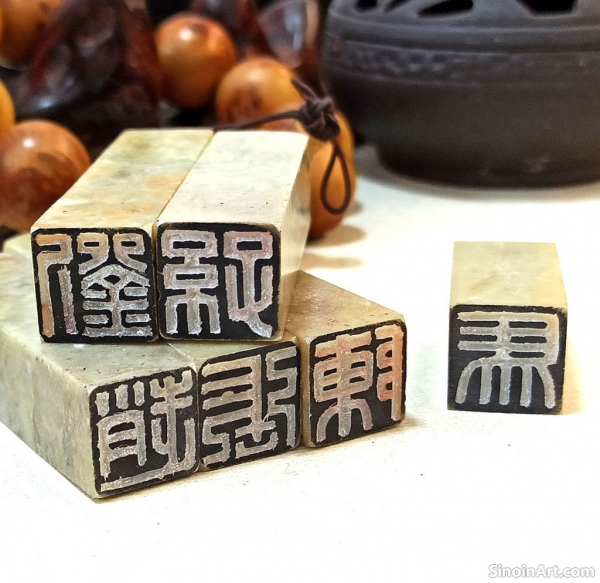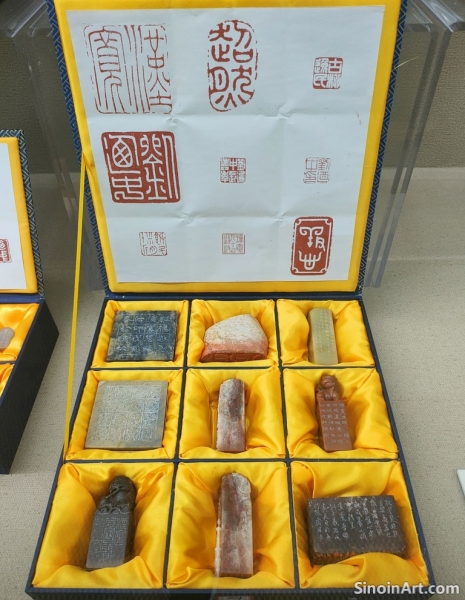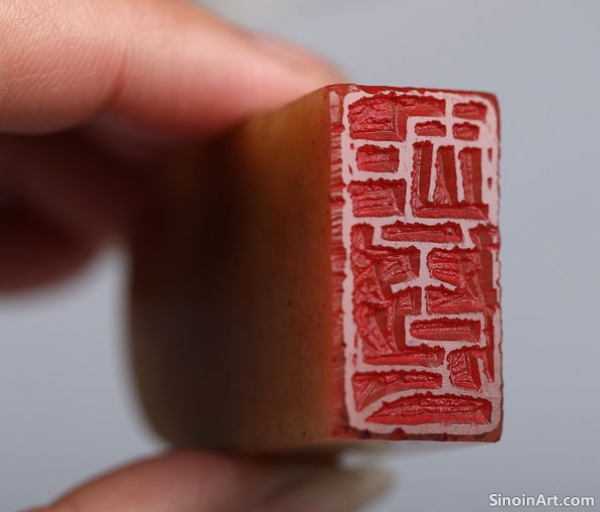Design Elements of Studio Seals: Beyond Just the Name
|
While the inscriptions on a zhāiguǎn yìnzhāng are central to its identity, the design elements surrounding the characters also contribute significantly to its overall artistic merit and meaning. These elements, including borders, patterns, and pictorial imagery, add layers of visual interest and symbolic depth to the studio seal. The design elements go beyond just the characters themselves.  Borders are common features of studio seals, often serving to frame the inscription and provide a sense of visual containment. These borders can range from simple lines to more elaborate patterns, each contributing to the seal's overall aesthetic. The borders provide an added layer of visual interest to the seals.  Patterns are another important design element of studio seals. These patterns, often drawn from nature or traditional motifs, can be used to fill the spaces around the characters, adding texture and visual complexity to the composition. Common designs include geometric patterns, or designs based on nature, for instance.  Pictorial elements, though less common than borders and patterns, are sometimes incorporated into studio seals. These small images, often related to the owner's interests or the nature of their studio, can add a personal and evocative touch to the seal. These images can reflect either the character of the hall or the owner's specific interests. The layout and spacing of the design elements are also crucial for the overall harmony and visual appeal of the studio seal. Seal carvers strive to create a balanced and dynamic composition, using these elements to enhance the interplay between the positive and negative space. The combination of the different design elements results in the final visual appeal. The design elements of studio seals, combined with the inscription itself, create a rich and meaningful artistic statement. They allow seal carvers to express their creativity, individuality, and cultural heritage through these small but powerful works of art. The additional design elements enhance the visual and aesthetic appeal of the seals. |
Tag : Studio Seal Design, Seal Borders, Patterned Seals, Pictorial Seals, Chinese Art Design
Related information
- Modern Uses of Collector's Seals: Adaptation and Evolution
- The Preservation of Seal Carving: Safeguarding an Ancient Art
- The Historical Evolution of Name Seals: From Ancient Origins to Modern Practice
- The Modern Practice of Chinese Seal Carving: Reimagining Tradition
- Materials for Collector's Seals: Reflecting Status and Artistic Value
This article explores how collector's seals are used in the modern era, examining contemporary practices and the ways in which artists and collectors are adapting this tradition to new contexts and purposes.
This article explores the importance of preserving Chinese seal carving, focusing on the need for documentation, education, innovation, and the involvement of cultural institutions.
This article traces the historical development of name seals in China, from their early origins to their continued practice in modern times, highlighting key changes and developments in their design and usage.
Explore the modern practice of Chinese seal carving. Discover how contemporary artists are reimagining tradition and incorporating new techniques and styles while respecting its ancient roots.
This article explores the various materials used in the creation of collector's seals, discussing how they reflect the collector's status, aesthetic preferences, and their approach to art collecting.